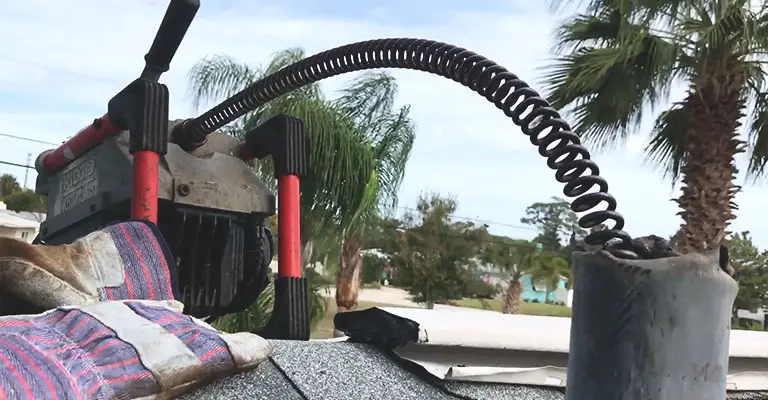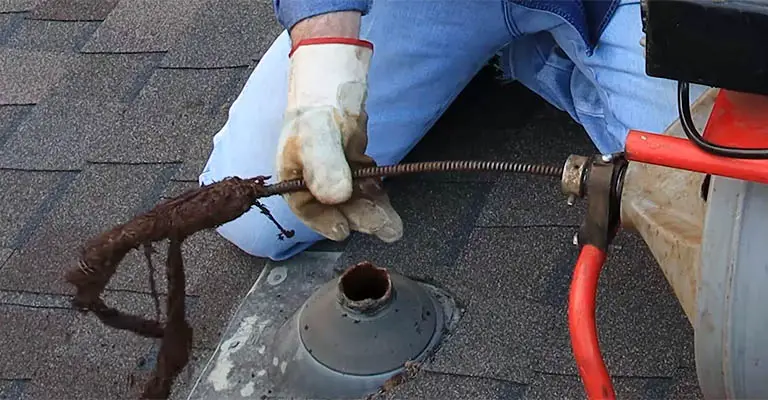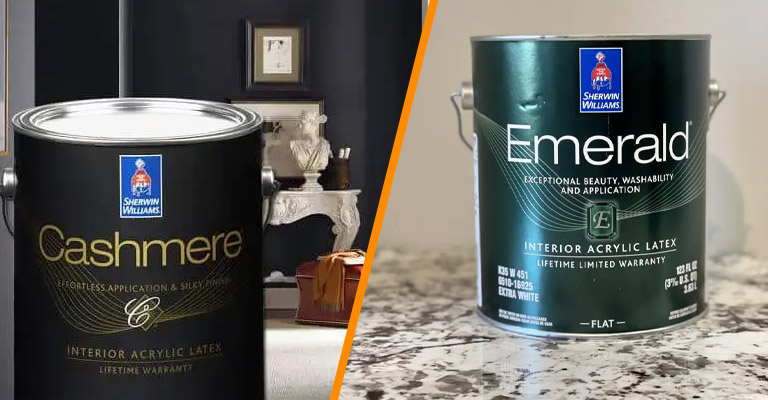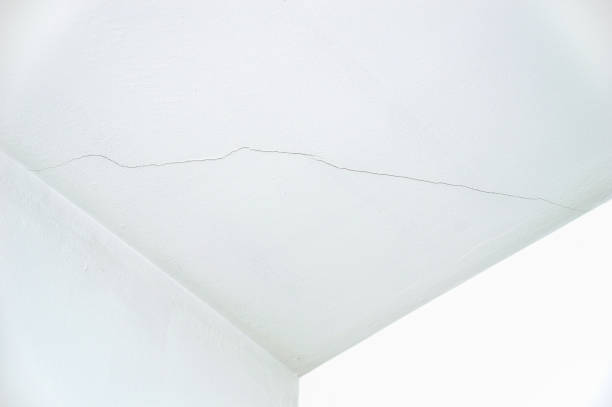Difference Between Flexible And Metal Ductwork
Most of us tend not to think about ductwork when it comes to HVAC systems. But ductwork is a crucial component of an HVAC system. Cooled or heated air is distributed throughout a building through air ducts.
All HVAC systems would be ineffective without them. In a house or a commercial building, you can use several different types of air ducts.
Metal ductwork is no longer the default duct material for HVAC contractors since the 1980s. In today’s homes, flexible ducts are the default, but that doesn’t necessarily mean they are better for airflow.
The advantages and disadvantages of each are different. Choosing the appropriate ductwork for your HVAC system is determined by your needs, which can be determined by your HVAC professional.
Here you will find a comparison of metal ductwork and flexible ductwork so that you can decide which is best for your home.
What’s A Flexible Duct?

Flexible ducts are essential for the operation of an air conditioning system. A flexible duct system connects the ductwork of the heating and cooling systems to the distribution system. The commercial building ceiling or walls are often adorned with grills and registers to distribute air.
It is convenient to attach flexible duct to sheet metal ductwork for use as supply air outlets. Metal band clamps or long zip ties are often used to attach them. Flexible ductwork materials regularly include rubber, PVC, stainless steel, silicone, polyurethane, and fabric dipped in neoprene.
A commercial building in an extreme climate should be constructed from rubber, PVC, stainless steel, and silicone. Because they resist heat and cooling, their productivity lasts for quite a while. Rubber and polyurethane are the most resistant to abrasion.
When exposed to extreme weather conditions, silicon suffers interior damage. PVC, however, offers superior performance in air handling environments. Both materials are flexible enough to handle heavy-duty applications.
What’s A Metal Duct?
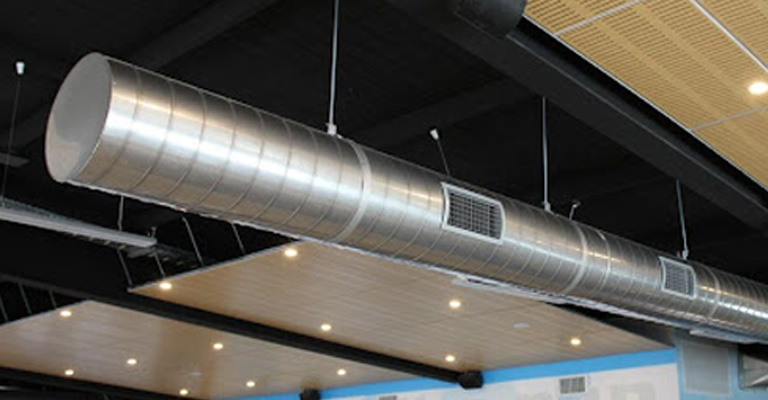
In commercial HVAC systems, rigid ducts (also known as hard ducts) are a more permanent solution. Aluminum and galvanized steel ducting are the most durable options. The maintenance schedule for these materials must be followed regularly.
The design, measurements, and installation of ductwork require computer-aided design and calculations. Experts examine the components of the heating and cooling system of the commercial building. There are many factors to consider including the furnace, heat pump, air conditioner, and others.
Commercial buildings should also consider their width and height ratios. To optimize the efficiency and performance of the system, it should have space for metal ducts. A rectangular sheet of metal and a round rigid duct are the two main types of metal ductwork.
Rectangular sheet metal is made up of 3-4′ sections and is secured by drives and cleats. In ranch-style homes, registers are typically above the bedroom doorways, and the hallway ceiling is dropped from 8′ to 6′.
The rectangular sheet metal ducts are nailed into the frame of the house, so they can’t be removed without removing the ceiling. These ducts can deliver conditioned air from central heating and cooling systems but also from evaporative coolers in homes built in the 1970s-80s.
Difference Between Flexible And Metal Ductwork
In the case of ductwork, the adage “out of sight, out of mind” could not be truer. Having air ducts concealed behind walls and in the basement can make it easy to forget about them.
However, homeowners and businesses should know the difference between flexible and metal ductwork so that they can make the right choice for their property.
Durability
Investing in metal ducts is a good long-term investment because of their durability. The metal ductwork is expensive but requires very little maintenance and can withstand temperatures exceeding 100 degrees F. As a result, sheet metal is the most efficient material for reducing heating and cooling costs.
In addition to restraining airflow, flexible ductwork is more vulnerable to improper installation. Poorly sealed joints, excessive length, and crumpled parts are just a few examples of what can go wrong. This material is also less durable than metal sheets. Flexible ducts require more regular maintenance than metal sheets.
To operate at its best, your building’s HVAC system requires regular maintenance, no matter what kind of ductwork it has. You’ll save big time down the road on repairs if you take care of maintenance now.
Air Resistance
Flexible ductwork can also cause more resistance to airflow because of the material’s nature. As opposed to metal ones, flexible ducts have a tendency to crumple, making supply air difficult to get to its designated ceiling fan.
In the hands of less experienced contractors, flexible ducting will be arranged in awkward configurations with sharp corners and sections that sag as they are loaded. The cost of metal ducts is higher, but they are well worth the investment. The material has low air resistance and retains shape.
HVAC Design
Your HVAC system is best suited for branches to be branched off from the main plenum using flexible ducts. Air travels through flexible ducts to individual ceiling vents throughout your building.
In addition to rubber and stainless steel, flexible ducts can be made from silicone, polyurethane, stainless steel, and silicone to conform to the building’s shape as needed.
The material of ductwork makes a significant difference between flexible and metal. Due to their construction from rigid sheet metal, metal ducts are ideal for enabling trunk-and-branch ductwork layouts. The flexible branches, which are directly connected to the furnaces, receive air from these units.
Installation
One of the key differences between flexible and metal ductwork is the ease of installation of flexible ducts. Because it’s lightweight, it can be bent in whatever way is necessary for it to adapt to the heating and cooling system. Your business spends less time and money on labor during installation, cutting down on costs.
Metal ductwork, on the other hand, requires meticulous installation. A building’s dimensions must be precisely measured before sheet metal can be installed. As well as being more difficult to transport and position, rigid material is also heavier. As a result, metal ductwork installation is much more expensive.
Which Is Best For Your Commercial Building?
The flexible duct has been the cause of many contractor complaints because the installation of the flexible ducts is haphazard in many cases. Metal ducts are ideal for entire air distribution systems, while flex ducts are excellent for short runs within trunk and branch systems.
The type of HVAC system you need depends on your needs. Several factors impact price, such as location, occupant count, square footage, etc. Find out more about your commercial building from a sheet metal fabricator or HVAC technician.
HVAC professionals are needed for the design, measurement, and installation of metal ductwork. The rigidity of sheet metal is also lower due to lower aerodynamic resistance, as well as the above problems.

Can I Install Metal Ductwork On An Existing Home?
Purchasing all metal ductwork for your home is more expensive than replacing your flex ductwork. There used to be a name for metal duct installers called tin-knockers, since measuring, fabricating and installing the ductwork required skills. Now, installing metal ductwork on an existing home is best left to the professionals. Seek their help.
Final Words
The airflow of flexible ductwork will be equivalent to or better than that of metal ductwork if it is installed correctly. It all depends on how it is installed. Metal ductwork offers the advantage that it is less likely to be installed incorrectly compared with flexible ductwork. A metal ductwork installation can be more difficult than a flexible ductwork installation. You won’t see a significant difference between airflow from flexible ductwork and metal ductwork if you hire an installer who follows best practices for flexible ductwork installation. When compared to sheet metal ductwork, flexible ductwork will be significantly cheaper.
Ihe intricate distinctions between flex duct and rigid metal ductwork, it’s evident that both serve unique roles in HVAC systems. Flex ductwork is celebrated for its ease of installation and adaptability in complex spaces. However, when it comes to durability and efficiency, rigid metal ducts often edge out their counterparts, particularly insulated metal ductwork which offers the dual benefit of sturdiness and energy conservation. When evaluating whether flexible or metal ductwork is suitable for a project, considerations should encompass the intended function, location, and longevity of the system. Combining both rigid and flexible ductwork can often present a balanced solution for many.

